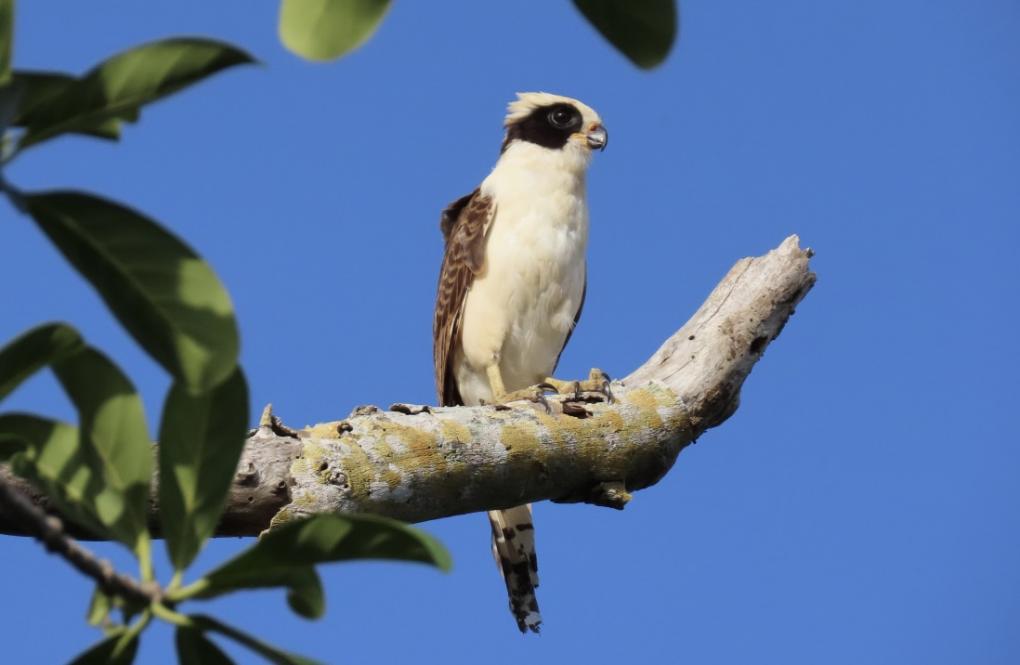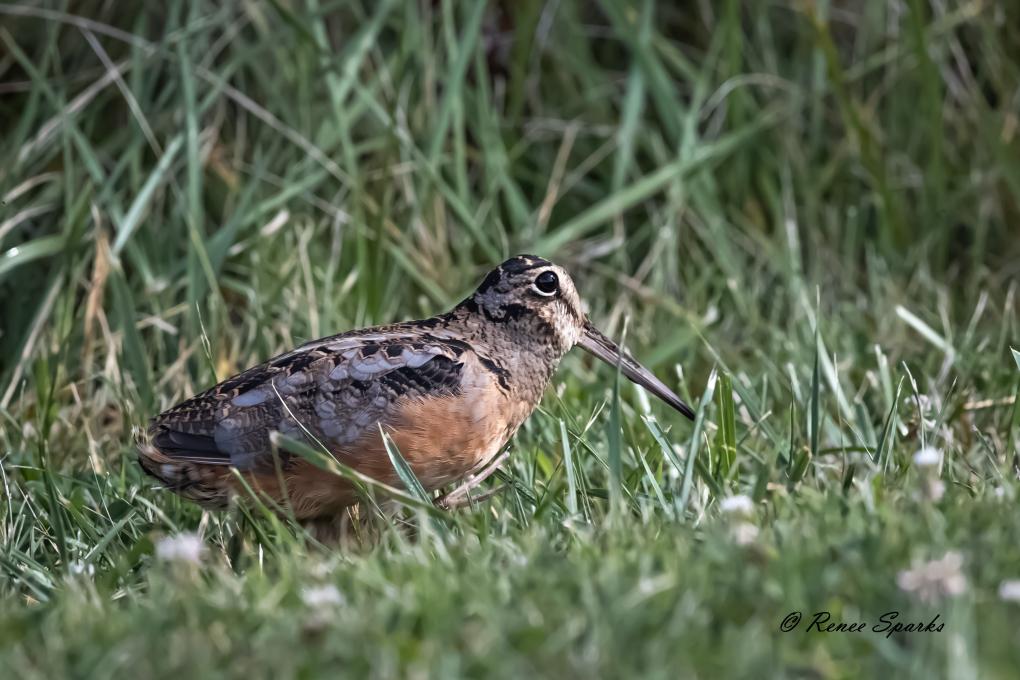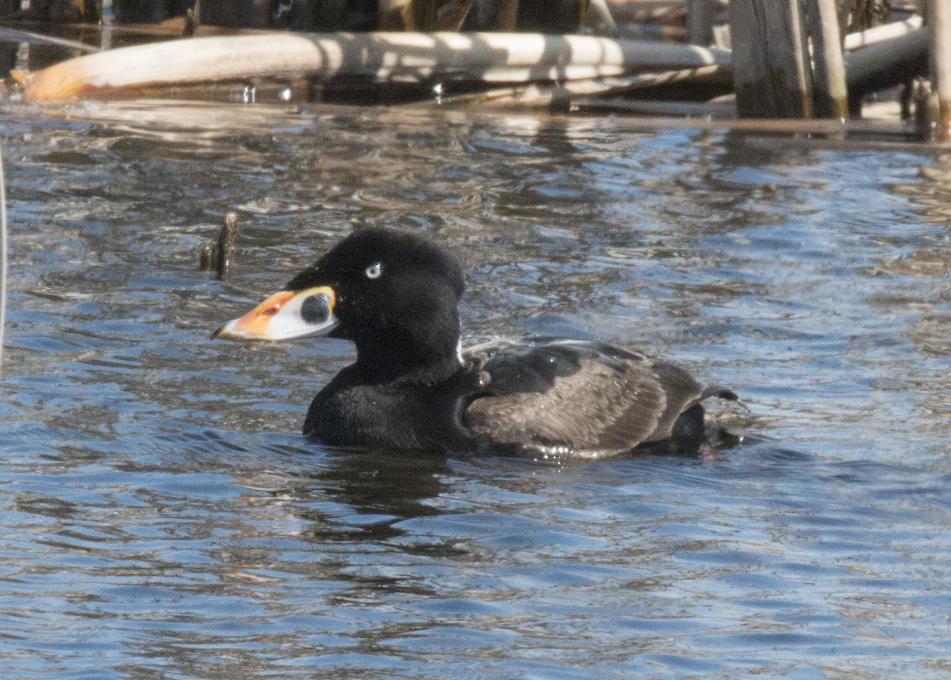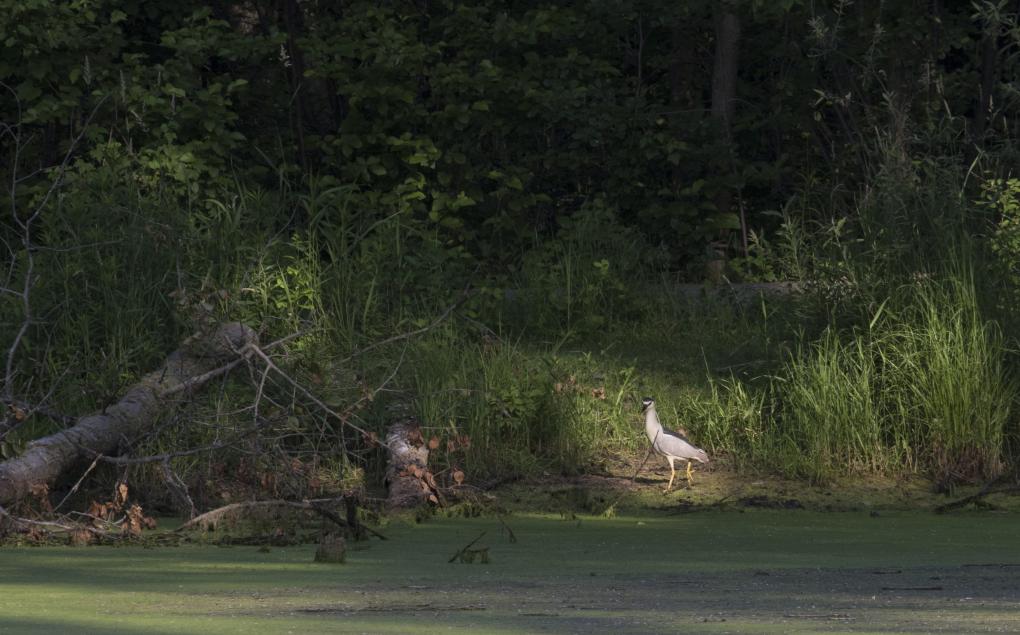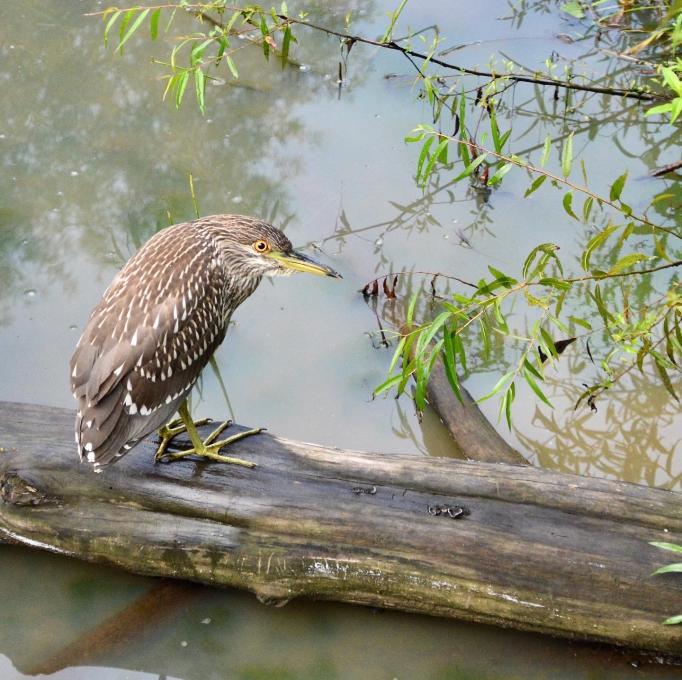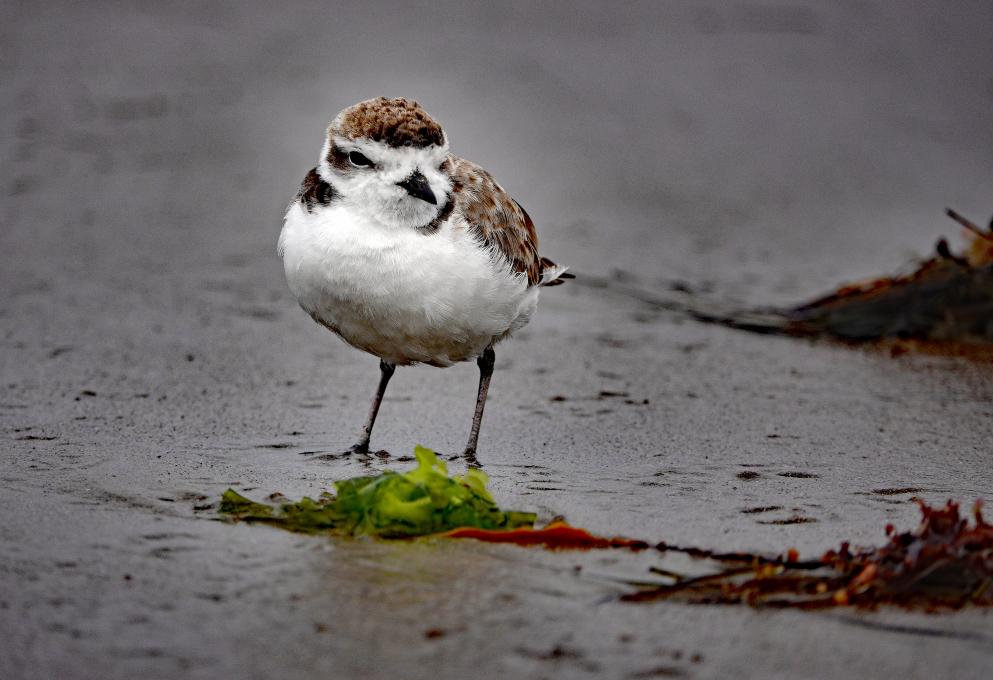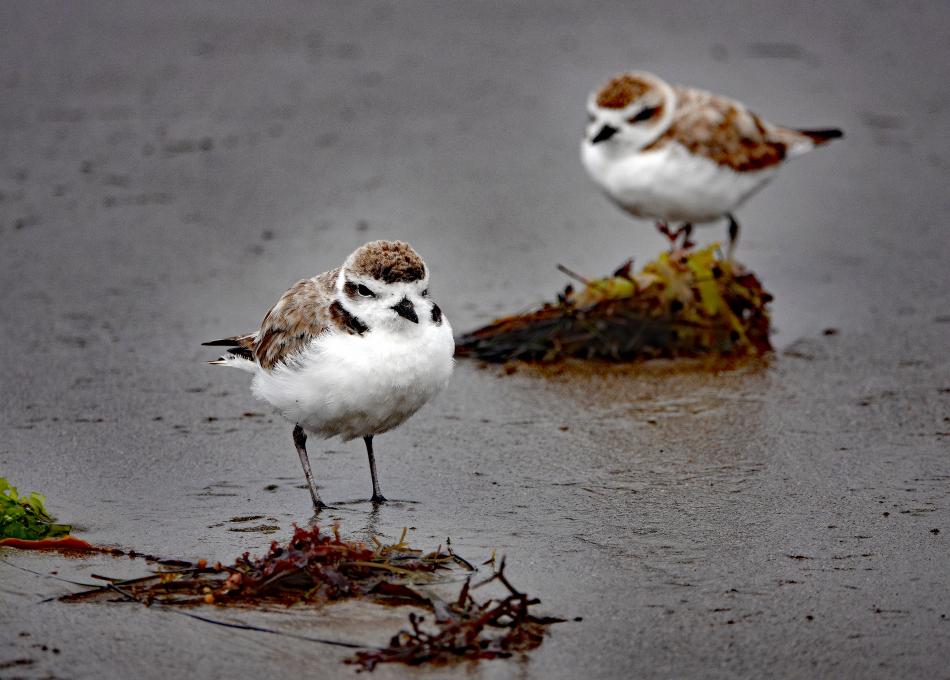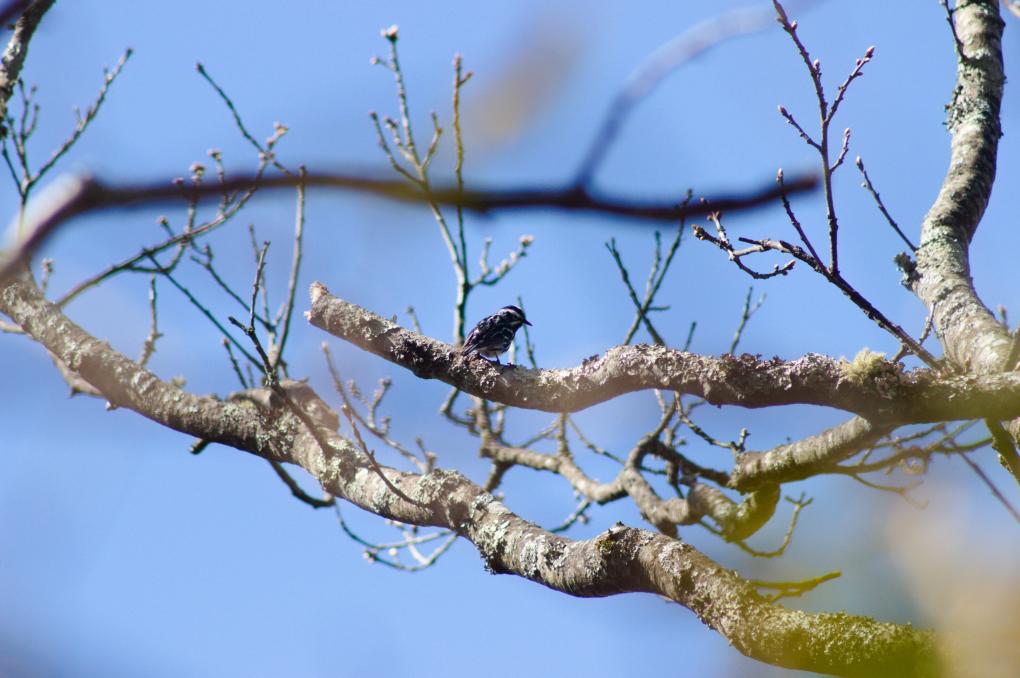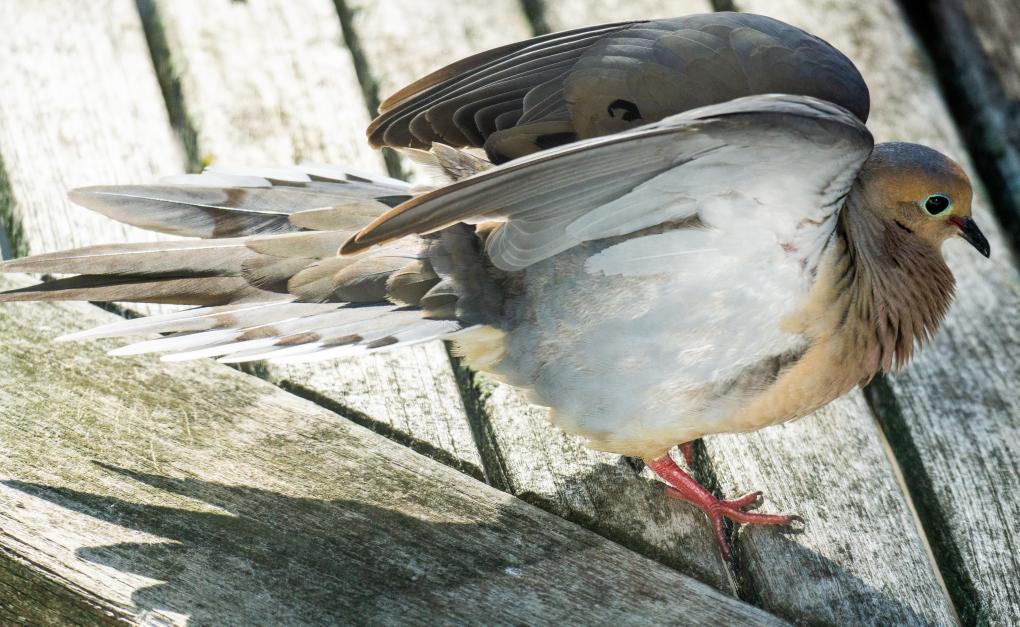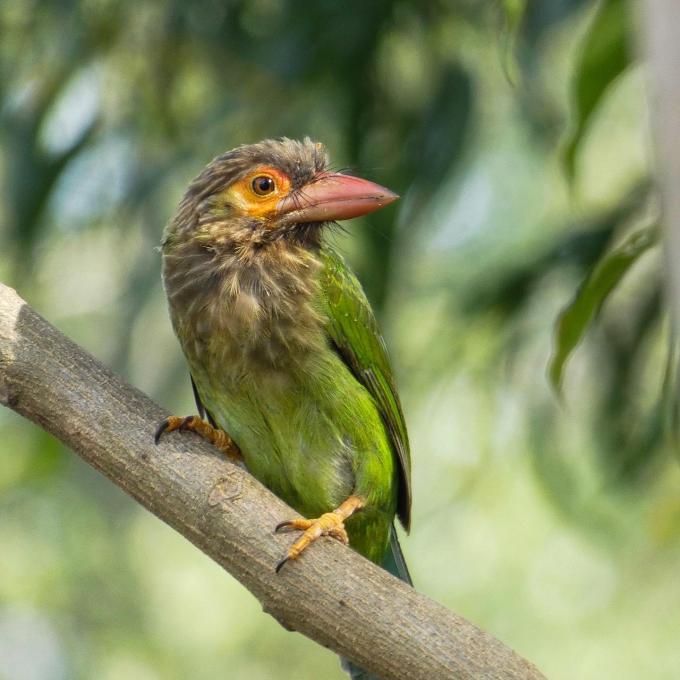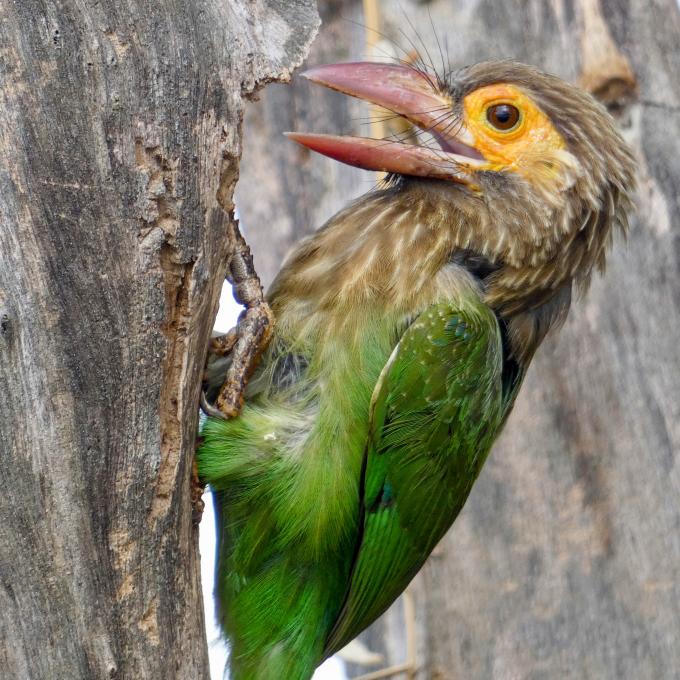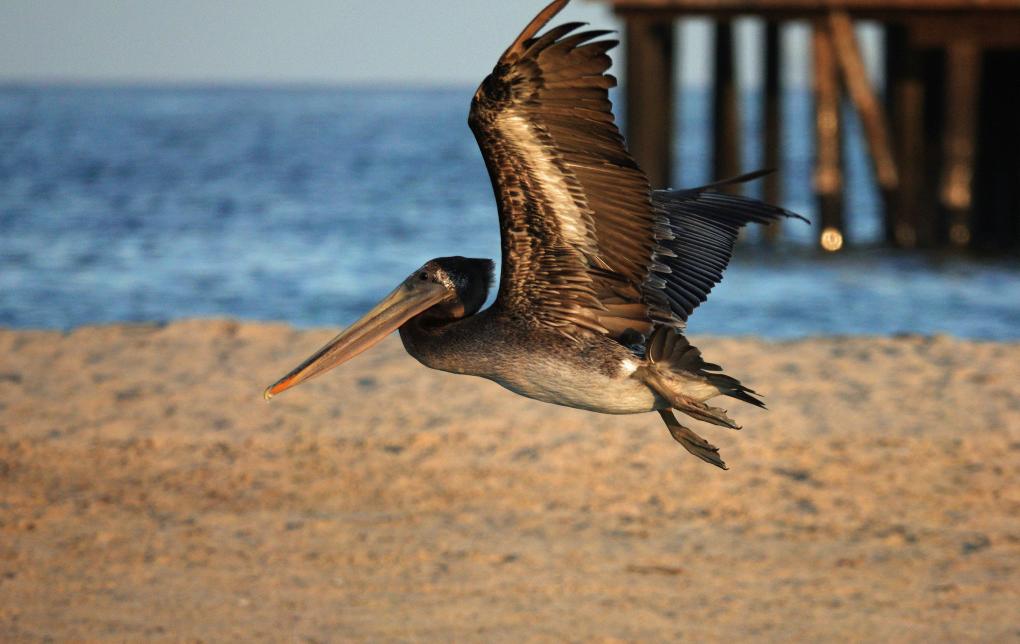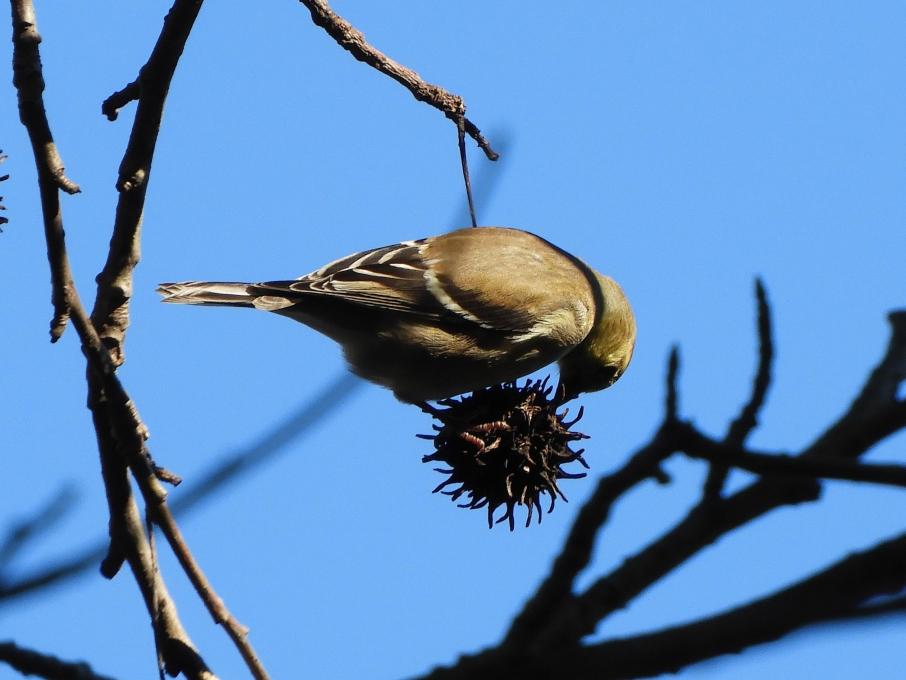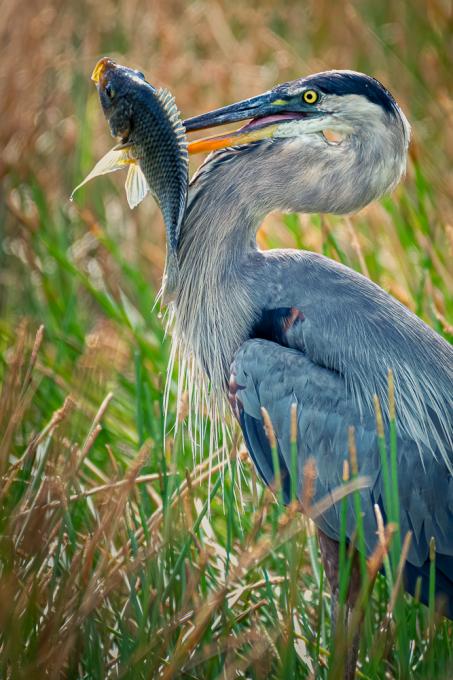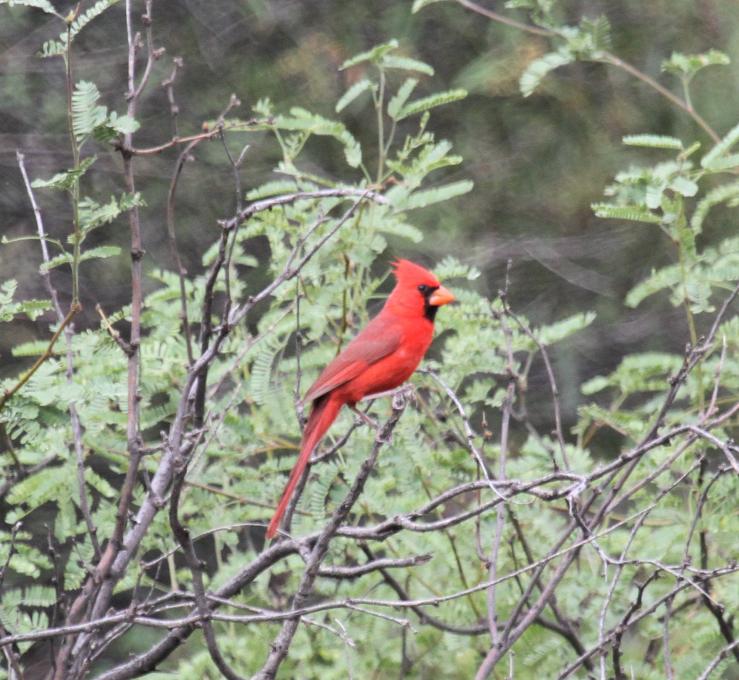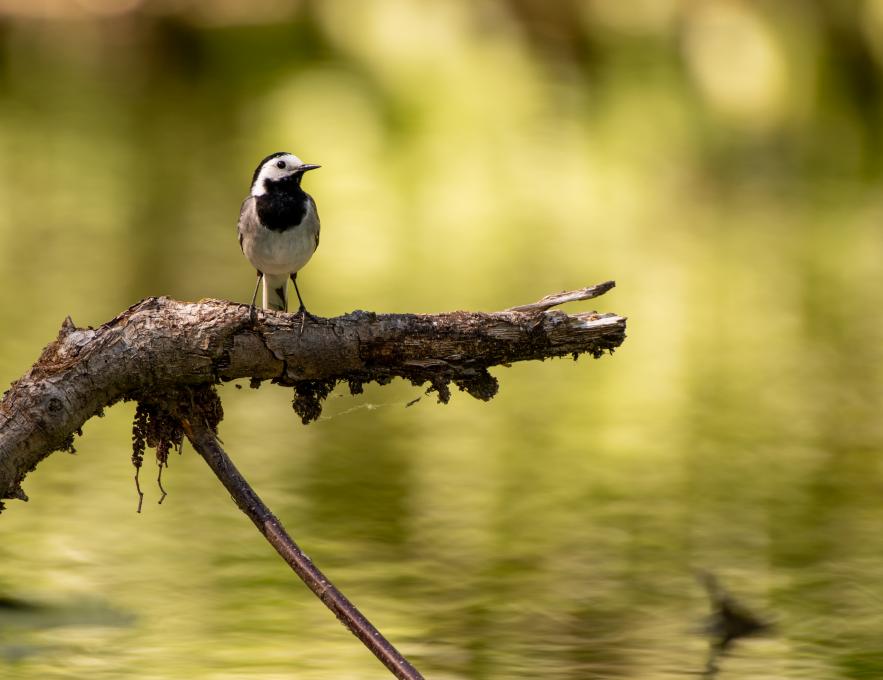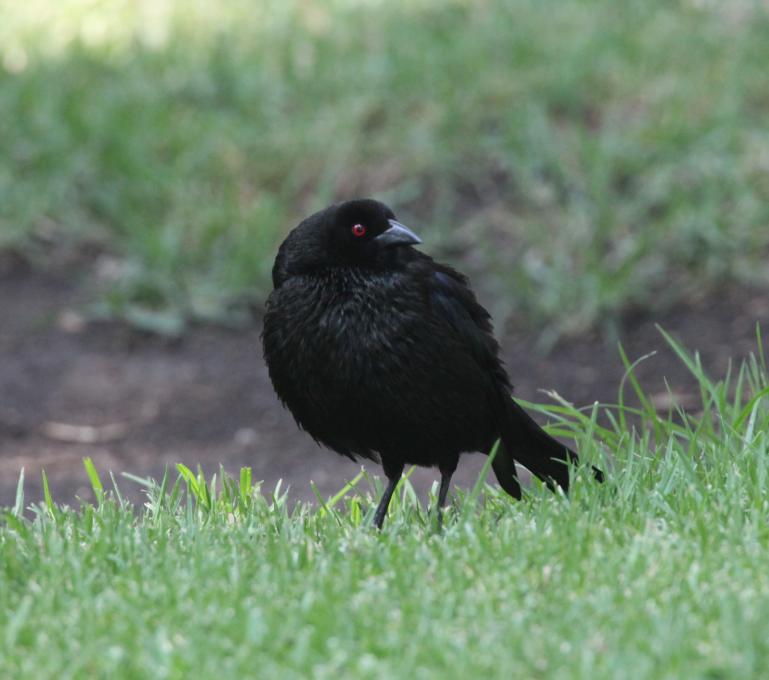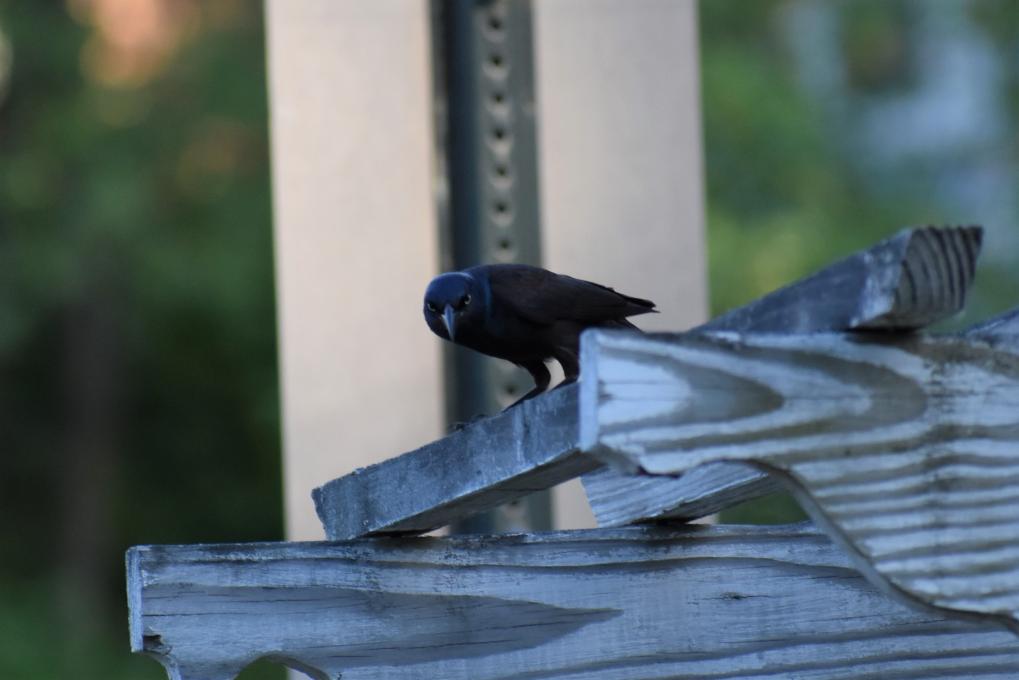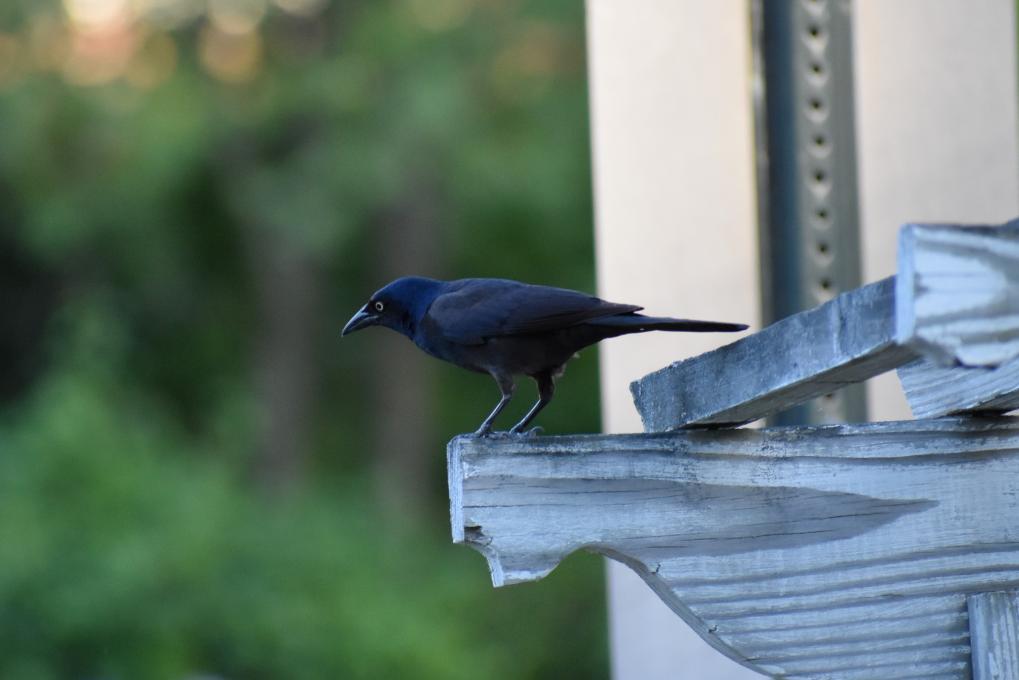The Cornell Lab Bird Academy › Discussion Groups › Bird Photography with Melissa Groo › Practice Understanding Birds for Better Photos
-

-
I

-
Amazing shot 🌟
-
-
Birding at Nisqually NRW this Great Blue Heron was fishing along the pier. I sat sat a safe distance while this beautiful bird ate this fish.

-
That is an amazing photo to capture.
-
-
Walking in a field late June when I saw a mother feeding her young on a barbed-wire fence. Time and again she swooped over the field & pond & quickly returned with insects. This continued for a very long time and they seemed to be totally unaware of my presence and the pictures I was taking of them. August is their peak migration time.


-
I look forward to seeing the hummingbirds show up for the summer at my feeder. This year they came but were not drinking from the feeder so I visited a local store and they recommended I change the feeder and brand of nectar and that worked. I have enjoyed observing them in Massachusetts but they will be migrating south soon. This is a female Ruby Throated hummingbird.
 .
.
-
I was walking in this road in the Yucatán Peninsula and we hear a couple of Laughing Falcons very near and we walk closer follow the call, and in a dry tree they were both. One fly away and the other stay a long time. like as if it felt good with us.

-
I was interested in the American Woodcock. I had never seen one in my neighborhood but thought I'd heard one once when walking in an area. For this assignment, I went to the marshy area where I thought I had heard the woodcock and sat for a while. I went in the early AM. There was a lot of activity in the marsh and at one point the woodcock just sort of waddled out of the weeds and onto an area where the lawn had been mowed. I watched it simply sit on the lawn for 20 min. or so. I snapped this photo and left.

-

I spotted this Surf Scoter in the marsh at Horicon National Wildlife Refuge. This is a rare find for inland Wisconsin and he was working his way along the edge of the cattails on the opposite edge of an opening that flowed along the road. Using my car as a blind, I parked and waited for him to come to me rather than attempting to move closer. The bird remained in view rather than retreating to cover and passed within thirty feet of me apparently unaware of my presence.
I used the same approach waiting in a hidden position while this Black-Crowned Night Heron continued feeding along the shore at the Barkhausen Waterfowl Preserve and finally maneuvered into the proper light for this photo.

-
Surf scoter...I would love to see that bird...what a look!
-
-
I went out looking for great blue heron which are found around a local lake instead I found this beauty—a juvenile black crowned night heron just standing there watching me!


-
Beautiful capture
-
Agreed - a beautiful bird and photo.
-
-
I followed Melissa's advice and walked on the shore in the early morning at low tide. I was especially happy to find an abundance of Western Snowy Plovers on the beach at Coal Oil Point (just west of UCSB). These birds are listed as threatened since 1993 but they nest at this protected location each year. Many signs encourage visitors to keep a distance from the nesting area which is roped off. However the rest of the beach is open to walkers and surfers.
I was especially pleased that a pair of these very cute young birds showed no fear of me as I watched them. Though I did not get down on my belly on the wet sand I squatted for quite a long time. Neither bird moved until I got up and left.
My shutter speed was 1/800, my aperture F4 and ISO 160. My lens was at 600mm. When I look at these photos greatly magnified I can see every individual feather. Editing was in Photoshop only - haze removal and Levels adjustment. Only minor cropping.


The rear bird is slightly out of focus due to narrow range of focus (F4).

-
Really gorgeous!
-
Love how the white pops in these images! Also like that the second bird in the middle shot is not in sharp focus, adding to the emphasis in the bird in front. Just starting this course myself. Hope I can find birds as cute as these!
-
love the photos!
-
Awesome shots.
All three photos have their own characters.
First one simply beautiful plover.
Second photo- slightly out of focus rear bird brings all your focus to the front one, kind of emphasising the bird in the front. Nice.
Third photo- Front view with the reflection , pretty cool. (Is that an angry face?? :) ) -
Love these photos and that feather detail.
-
Fabulous image. I love the expression you captured and straight on perspective to get the reflection was well done.
-
-
- I'm always excited when migration begins in early spring. This is when the Black and White Warblers pass through our property. This year I was only to see them for a short time. On vacation at the lake house on Nantahala we went to the Wayah Bald Tower were we spotted the Black and White Warbler that you see in the two pictures where there is no leaves on the trees. With that said, for this section of the course I decided to study the Black and White Warbler. It's a fascinating bird. Builds its nest on the ground next to a tree, log or a bolder. Prefers primary to secondary forest. Eats most bugs you find on trees as it climbs around the bottom of the trunk making its way up similar to a Nut Hatch or Brown Creeper. As I set out to see if I could observe and photo one this week ( 07/21/2020). I was able to get a photo of the Black and White Warbler. (the photo of the trees with leaves). They are now you see me now you don't. Maybe you tell that it's a Black and White Warbler.



- I'm always excited when migration begins in early spring. This is when the Black and White Warblers pass through our property. This year I was only to see them for a short time. On vacation at the lake house on Nantahala we went to the Wayah Bald Tower were we spotted the Black and White Warbler that you see in the two pictures where there is no leaves on the trees. With that said, for this section of the course I decided to study the Black and White Warbler. It's a fascinating bird. Builds its nest on the ground next to a tree, log or a bolder. Prefers primary to secondary forest. Eats most bugs you find on trees as it climbs around the bottom of the trunk making its way up similar to a Nut Hatch or Brown Creeper. As I set out to see if I could observe and photo one this week ( 07/21/2020). I was able to get a photo of the Black and White Warbler. (the photo of the trees with leaves). They are now you see me now you don't. Maybe you tell that it's a Black and White Warbler.
-
I researched Cedar Waxwings because my usual observations of them are when they are located at the tops of tall trees on bare branches. The All About Birds site listed various berry trees that are favorite foods of these beautiful birds. A local photographer mentioned a park where there are serviceberry trees. Sitting on a bench in view of the trees, I could hear the bzeee calls from high up in the trees around me. It wasn't long before the Cedar Waxwings were flying down for the berries. I only managed to photograph them in half-sun/half-shade but they were fun to watch.

-
I live in NY and would love to see these birds. You have nicely captured them though! Great job!
-
-

-
The following image of a Mourning Dove was taken quite early in my backyard. I took this photo actually from behind glass from our living room window where we often see many different birds gathering. I can always tell when the Mourning Doves are near by their cooing and this one landed right in front of my eyes. We see them year round and often in pairs. They do tend to dominate this old wooden table but often we see them sharing seeds on the ground with Cardinals and Grackles. Occasionally, I see them on telephone wires resting along with taking rests on some large oak trees near us.
-
@Michele I live in a very wooded area, and I see them resting in trees a lot too. I also see them put up there wings like this a lot to when threatened. I would not have guessed that this picture was through a window. Great job!
-
-



One of my favorite birds is the Brown-headed Barbet. I loved these birds' songs long before I knew who they were, got into birding, or tryed my hand at photographing birds. I find them to be pretty shy though. In early March, I discovered one pounding away making a nest on a dead tree near Thalangama Lake, where I try to walk every day. It was so engrossed in what it was doing that it didn't even care that I was nearby. Then quarantine came, and for two months I couldn't check back on the site. Once we were free to return, and walk (with masks), I checked again over and over, and figured too much time had passed. Then one morning I spotted one of the barbets coming out of the hole, so I kept checking back, keeping a distance (bridge camera with 1200 zoom). Saw it a few times, and nothing again for the last couple of weeks, so I thought maybe the time had passed. This morning I saw one of them again, on a branch near the hole! There aren't a lot of good books on the birds of Sri Lanka, but I do have a couple I keep on hand and reference frequently. It's often the case - as in this instance - that I witness something and then learn more about it. Primary breeding season is February to July (fits my timeframe), and "the bird, working solitarily, hammers and pecks out a hole in a soft-wooded dead stump or branch" (G.M. Henry, A Guide to the Birds of Sri Lanka, p. 324). I also learned from the guide that the calls I love so much are the pair keeping in touch with one another from some distance.-
Nice shots! Great clarity and color! Very cool looking bird. I believe I've only ever seen one in Tanzania!
-
I wish I could see that bird, let alone photograph it so well! I think this is such a cool bird. How did you find its nest?
-
Loved your photos and got a sense of the bird too from them!
-
-


The Brown Pelican (Pelicanus occidentalis) is a common species today along all our coast but it was on the Endangered Species list from 1970 to 2009 and became extinct in some states. The cause was the use of the now banned pesticide DDT which caused pelican eggs to become so thin they would fracture before the embryo was fully developed. There has been an enormous conservation effort to restore this magnificent species, especially so in Santa Barbara where some of my birding colleagues have done regular brown pelican counts. They are very sociable birds both congregating and flying together often in large groups. I know that there is a breeding colony on Anacapa Island off the southern California coast. It is an enormous bird and because of its size it is easier to photograph in flight than most other smaller birds. The birds I've been seeing lately along with the Black Skimmers are juveniles, the adult being mostly gray and white. It is fun to watch them when they dive head first into the ocean to capture fish.-
These are both great photos! What beautiful birds.
-
-
I spotted a Great Blue Heron last week in a nearby marsh, and was inspired by this class to learn more about this species. I started paying attention to the tide charts for my area, and read about GBH feeding habits, and am now trying to use that to predict when he'll be there again. The last few mornings I saw him there 1 to 4 hours after low tide, but this morning I was there an hour before low tide and he wasn't there. As I was leaving I saw him in a different spot, not in the marsh, but way out at the tide line of the beach. Now I am wondering if he goes up to the marsh only after low tide. Will have to keep checking to find out. This photo was taken four hours after low tide.

-
Lovely photo. I love the intense colors in both the bird and the water.
-
-

I live a block from Alice Keck Park and walk my dog there often in the mornings. One day I noticed a juvenile Great Blue Heron in the pond. I walked home and got my camera, then waited for about an hour while watching this bird's movements. Suddenly he spotted and caught a large fish and held it in his bill. The fish was obviously too large for him to swallow, so he had to drop it. I shot multiple frames.

I often bird in the evenings at the Andree Clark Bird Refuge in Santa Barbara. I was seated at the third viewing platform when a young Black Crowned Night Heron flew in and landed on the bench not more than 15 feet away from me. He was quite comfortable sitting there and watching me for several minutes. It was a wonderful experience! These birds are breeding in this area as I have seen several juveniles there as well.
Dika Golovatchoff-
The first time I saw this bird I thought it was a statue as it did not move! Your photo reminds me of that time; nice photo!
-
-
I shot this goldfinch feeding on a sweet-gum ball in mid-January this year at a city-owned swamp near my house. The behavior surprised me because I had always though of sweet-gum balls as being useless outdoor Legos. So I did a bit of research and found out that sweet-gum balls provide a critical source of food in mid-winter to several species, particularly goldfinches, at a time when other food sources are very scarce. It gave me a new appreciation for the role of the sweet-gum tree in the environment, that I wouldn't have known without the experience of taking this picture.

-
I never thought about sweet gum balls as food sources. Thanks for the information. Dana
-
-
The online resources are such a great help! I have loved watching and photographing Great Blue Herons for some time. We are blessed to live on a small lake in Florida where we have a fair amount of birds and the occasional American Alligator. This GBH was fishing for breakfast one recent morning and I was able to capture a few frames.

-
Wow!
-
-
I, too, am intimidated by the quality of the photographs submitted thus far. They encourage me to improve. I try to be a faithful student and follow directions, so I decided to research two birds that I had hoped to see yesterday. They were the Black-tailed Gnatcatcher and the Black-capped Gnatcatcher. Both had been seen on on the slopes of Montosa Canyon which includes their natural habitat of isolation, slopes and mesquite trees. Unfortunately on a gray day, I neither heard nor saw them. It was uncharacteristically quiet in the canyon. Eager to fulfill my assignment, I switched to the only birds I was hearing, Bell's Vireos and Northern Cardinals. My Bell's photos were very poor and the Cardinal was pretty far away. It was the best I could do. I did my research but not on the bird I photographed, the commonly seen Cardinal.

-
I like your cardinal photo! The cardinal really stands out from the greenery behind.
I am learning to expect the unexpected. We can plan for what we want to see and photograph, but we really just need to be open and ready to be awed by what we come across. That is part of the fun! -
We are all learning bird photography, so no worries. I love seeing the birds and if I get a photo then it is a bonus!
-
-
I very much appreciate this lesson on responsibility.
I have a question from a later lesson. You recommend using a teleconverter. My camera is a Nikon D5300. My long lense is a Nikon AF-S Nikkor 80-400 1:4.5-5.6G. What teleconverter do you recommend ?
Thank you very much 🙏
Phil Fitzpatrick
bgaldoflife@yahoo.com-
Hello Phil,
Welcome to the course. Melissa isn't a full time staff member so she won't be on here to answer questions. The discussion boards are peer to peer for the most part. However we do have several more advanced photographers on here that might have a suggestion for you on this. Melissa will indeed talk about teleconverters in the lesson about gear. I hope you and everyone enjoy the course. When you post questions you should come back at a later date to look for replies. -
The Nikon 1.4 teleconverter will cost you one f stop so your maximum aperture at 400 mm will be f8. Most Nikon DSLRs will auto focus at f8, but not all. Make sure you check Nikon's web site for compatibility info.
-
-
This was my first successful sighting and close observation of a bird!
Common name: Common Wagtail
Scientific name: Motacilla alba

I recently began observing birds in my surroundings. This was one of the commonly encountered species in the garden and surroundings with ample fresh water.
Observation: This species appeared almost daily and at different times of the day. One interesting observation was (correct me if I am wrong), that it tried to keep its radius of food capture constant. When I tried to go near it (15 feet away), it flew away to the next perch, whoch was about 30 feet away. However, as I kept still and sat there for a while, it returned to its radius of food search. Also, it seemed to be a pretty confident bird. I also saw a second one, which it tried to follow. I do not clearly understand if it was an opposite gender, since the information about the bird says that it breeds throughout the year, but especially from July till December.
I think the research I did at the beginning helped me to know which species are commonly found and I can hope to see most of the times during the day. This also means that I had more chances of spotting it. I look forward to learning and applying it in the field.
Thanks,
Siddhesh -
Lately I had been trying to photograph the birds on a garden in Mexico City. I like the bronzed cowbird, for its red eyes and it´s mating display, the male will it inflate itself and hover above the female. This bird lives all year round here, I didn´t know it is a brood parasite.
-


-
I've primarily been photographing from our porch and yard, but I was certainly surprised by how uncommonly beautiful the common grackle is. I've taken to peeking over our fence (with the help of an upturned bucket) into the neighboring field where they tend to feed so as not to startle them! I've been lucky once or twice and already been waiting on the porch when they've landed closer, and managed to catch this stunning male on our arch!
I've also started taking my camera with me when I bike, so I can stop by one of the local ponds and capture the wildlife there. Even a few minutes away, the difference in diversity is striking.



-
Wow Scott you have captured some real emotions and expressions. First impression I got going through your pictures was something like..... "Who is that spying on me?? ... "Ahhh I will be fine ....." ..... "No, its not ... here I come... watch out ... "
Awesome. -
hello Scott,
Great shots. I also find the grackle to be a pretty bird to photograph especially with his irridescence and contrasting yellow eye. I am an avid cyclist and often sight birds when I am riding my bike. I have a bid telephoto lens though so I am wary of carrying it on my bike in a backpack. I was wondering how you manage carrying a camera and biking? Any advice?
-
Read More:



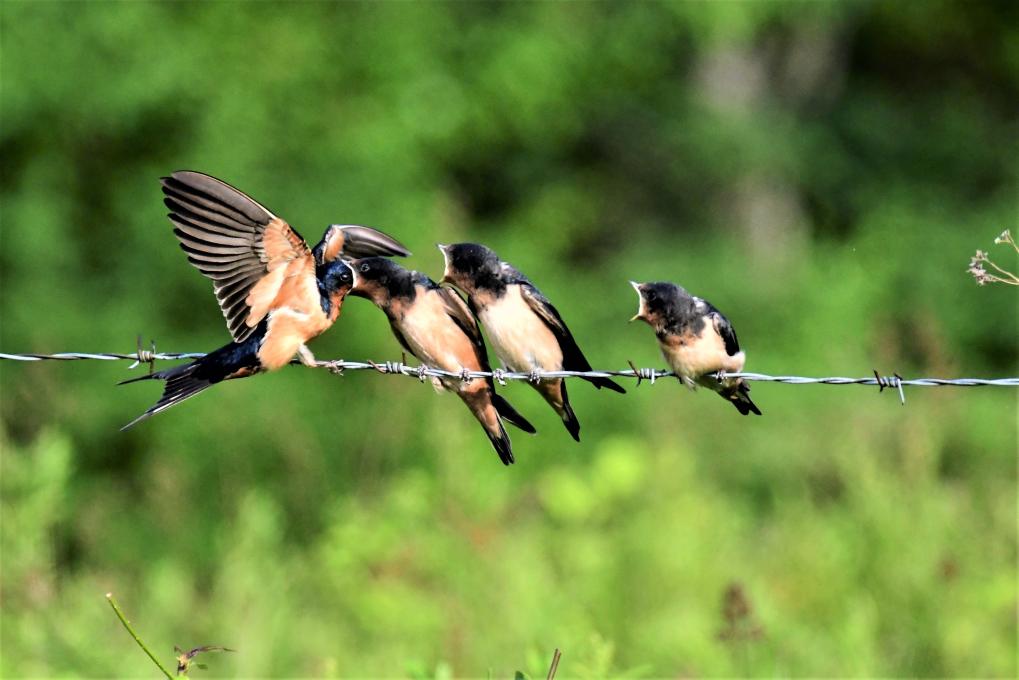
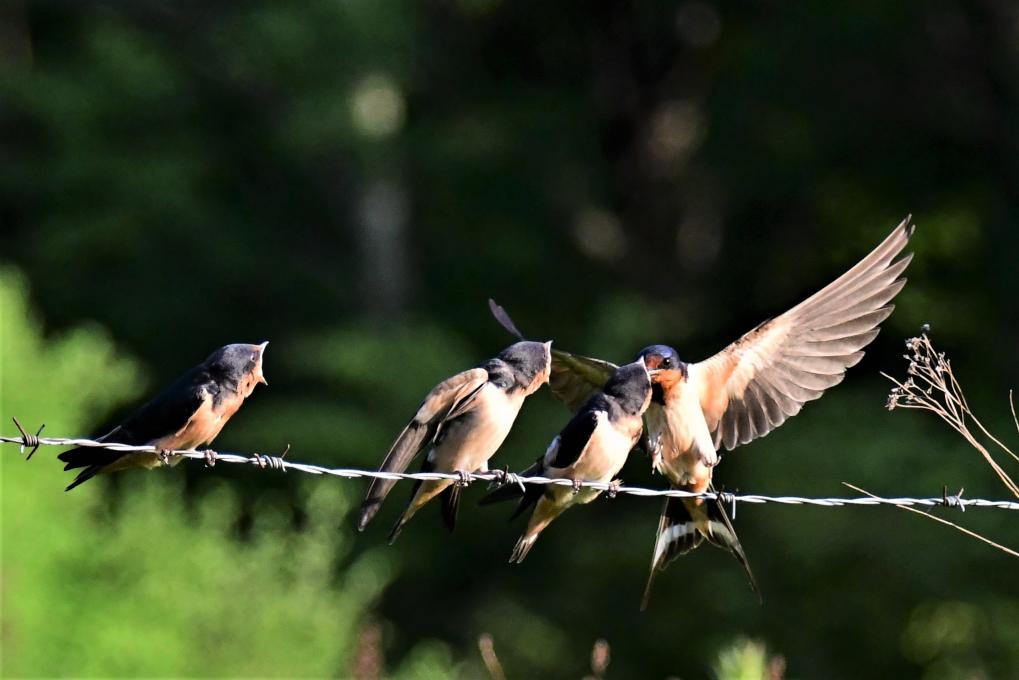
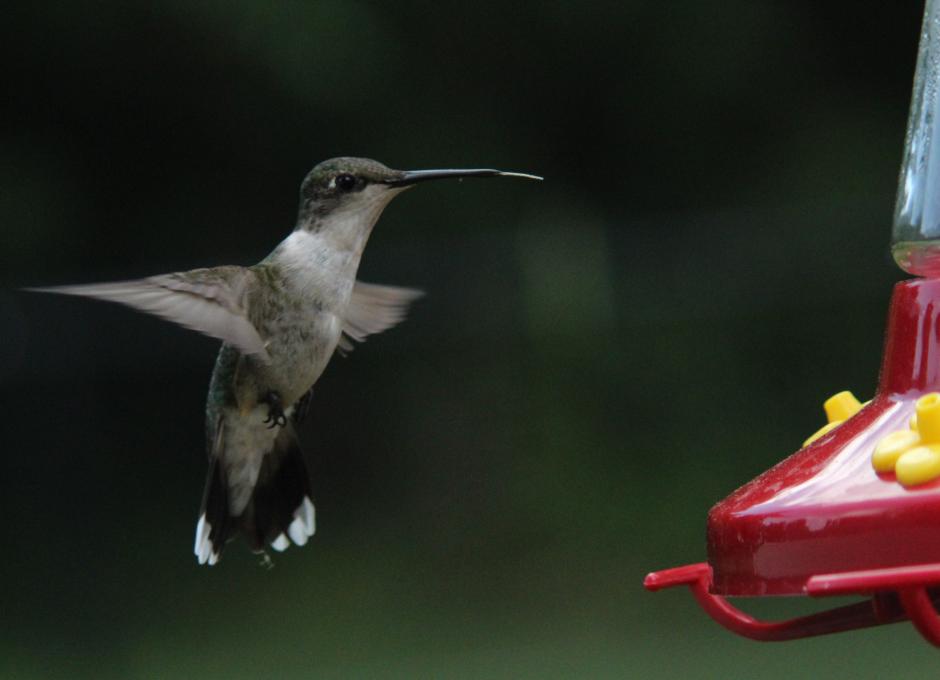 .
.